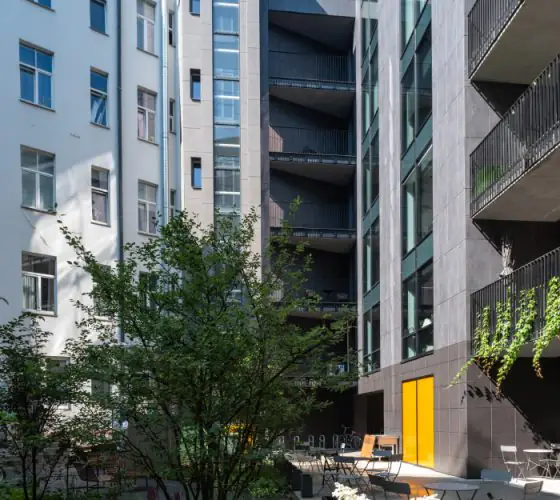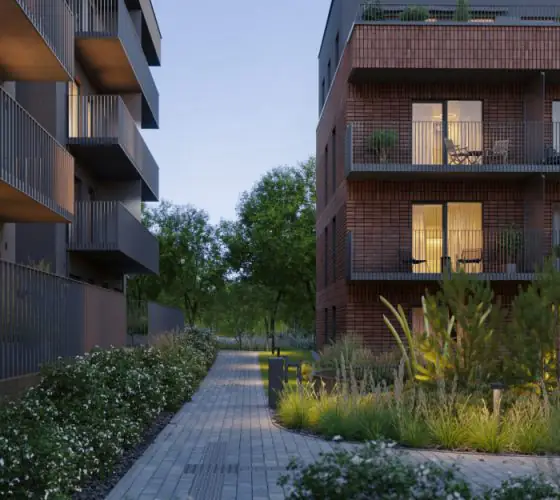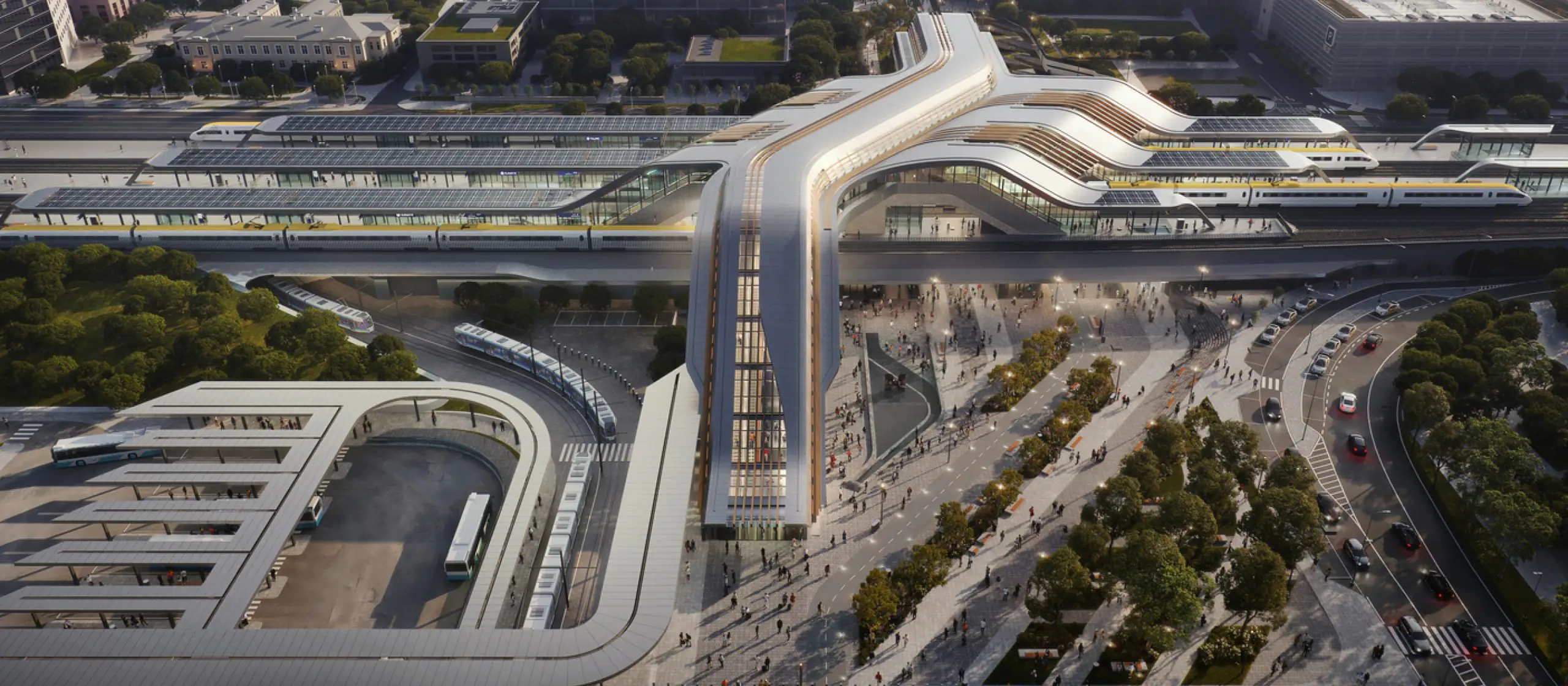
Rail Baltica is a grand project aimed at integrating the Baltic States with Europe through a modern railway system. The planned route will connect Vilnius, Kaunas, Panevėžys, Riga, Tallinn, Pärnu, and Warsaw. In each country, extensive work has already commenced, and Tallinn is no exception. In 2019, Zaha Hadid Architects won the competition to design the Ülemiste terminal. Construction began in October 2023, with completion expected in 2028.
It is the second project of Zaha Hadid Architects in the Baltic states, we already discussed the Baltic Stadium project in Vilnius recently.
Concept
The terminal will serve as a hub not only for trains but also for buses and cars, while keeping pedestrian needs in focus. The project significantly improves transportation connections in Eastern Europe. Tallinn’s railway station will feature a unique design, shaped like a silver leaf. Beyond its role as a transportation node, the terminal doubles as a pedestrian bridge, seamlessly integrating the urban landscape and improving accessibility for residents and visitors. In short, travel and communication across Eastern Europe will become more efficient than ever before.
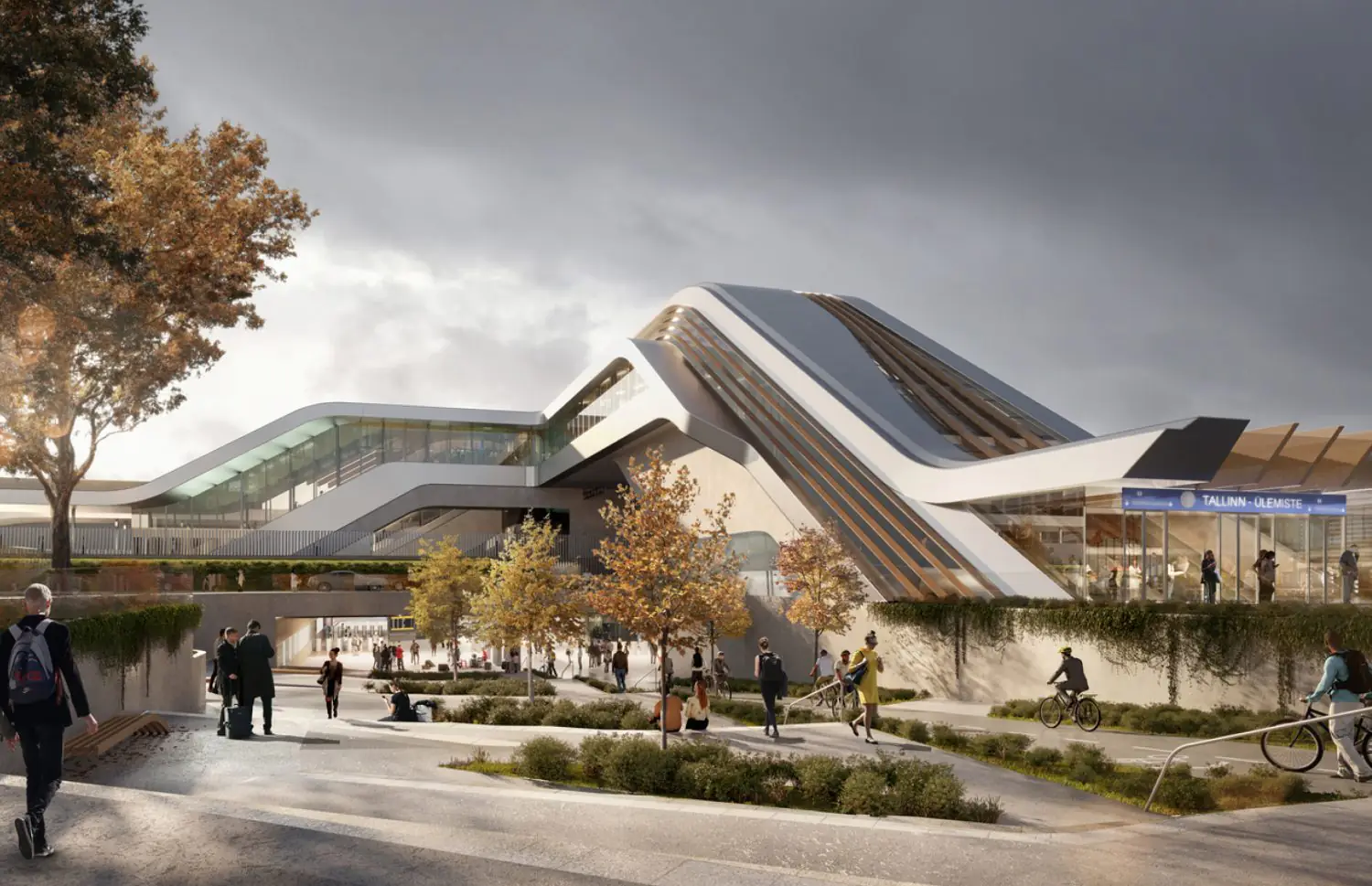
Infrastructure
Located in the Ülemiste district, the terminal is central to a dynamic infrastructure project. Rail Baltica’s 870-kilometer standard gauge railway. The Ülemiste terminal will also link directly to Tallinn Airport, creating a cohesive air and rail travel network.
Investors believe that establishing such a significant transportation hub will drive economic growth not only in Estonia but across all Baltic States. The phased construction plan, based on a modular design by Zaha Hadid Architects and the Estonian firm Esplan, ensures uninterrupted railway operations throughout the project. Thanks to its modular approach, the new terminal will be built in stages, minimizing disruption to transportation in this busy district.
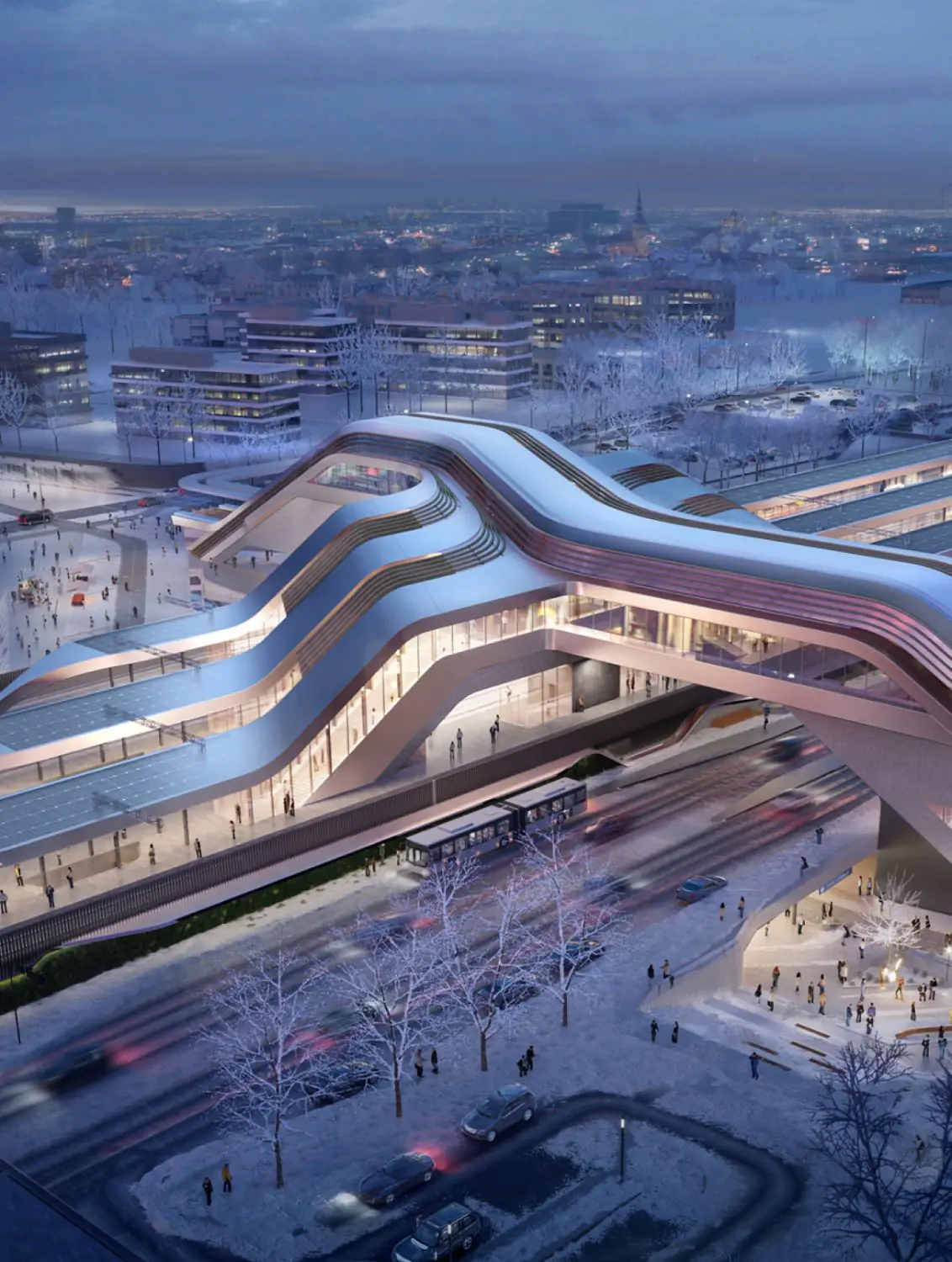
Amenities
The terminal is designed with passenger convenience in mind. Its spacious interior features clear navigation paths and state-of-the-art facilities, ensuring a seamless transit experience. Amenities include dedicated bicycle storage and electric vehicle charging stations, promoting sustainable commuting. Retail spaces and public areas enhance its role as a community hub.

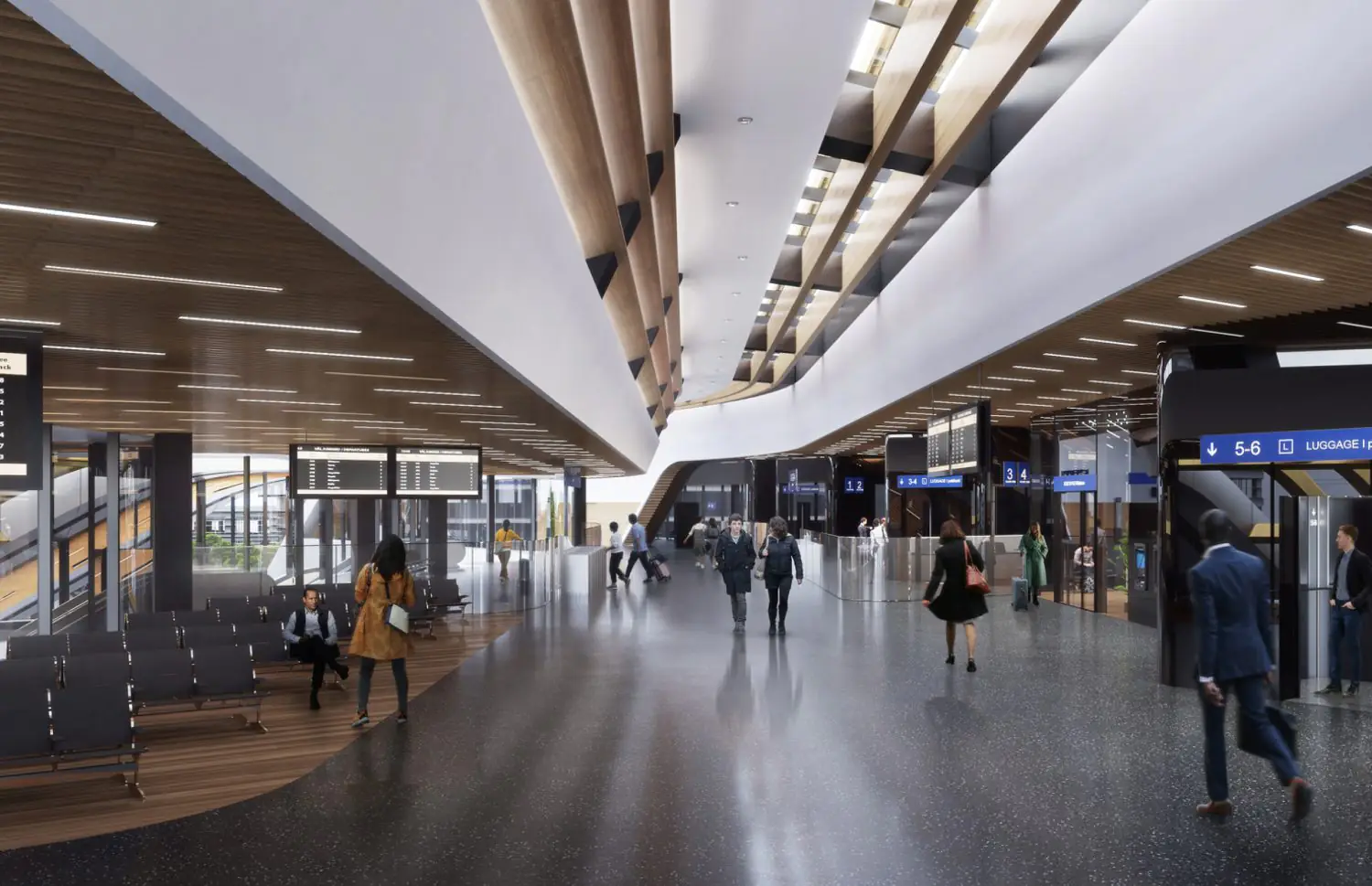
The terminal’s spatial geometry has been carefully designed to simplify navigation and create a comfortable environment for passengers, both inside the terminal and across the pedestrian bridge.
Energy Efficiency
Energy efficiency is a cornerstone of the terminal’s design. By incorporating advanced systems, the facility minimizes energy consumption while ensuring optimal functionality. The use of renewable energy sources, modern insulation, and natural lighting enhances its sustainability. These features not only reduce operational costs but also aim to secure BREEAM certification.
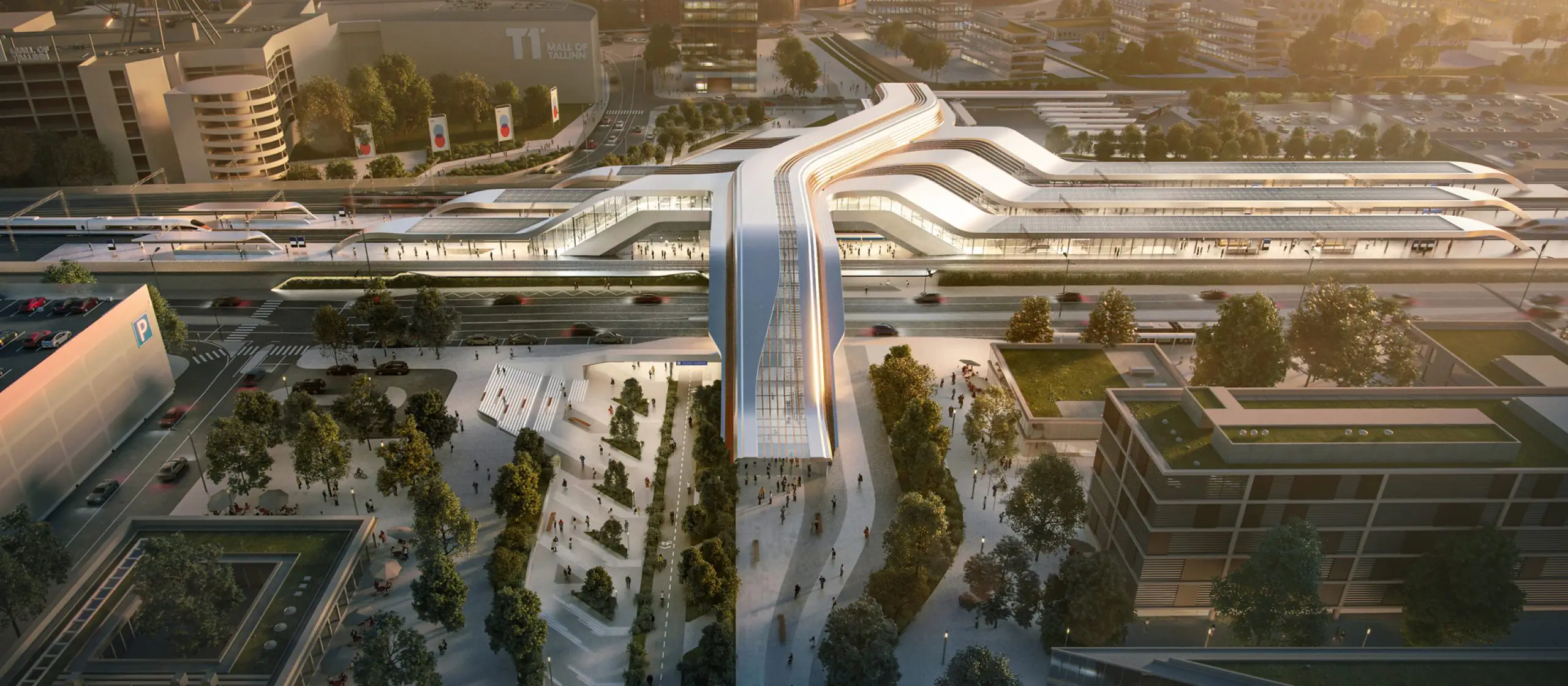
Prices
The total cost of the Rail Baltica project is currently estimated at €15.3 billion. A significant portion of the funding, approximately 85%, will be covered by the European Union’s financial programs.
Project Team
The Ülemiste Passenger Terminal is the result of collaboration between international and local experts. Zaha Hadid Architects, celebrated for their innovative designs, partnered with the Estonian firm Esplan to create a modular, flexible structure. The construction consortium, including GRK Eesti AS and GRK Suomi OY, is tasked with completing the project by 2028.





